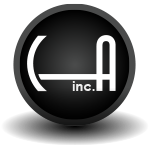E-Commerce Web Design
E-commerce, or Electric Commerce, is a web site that allows for online commerce. That simple. It is also referred to as:
- Online store
- Shopping cart
- Selling online
- E-commerce web site
It’s all the same: if you want to sell goods and / or services online, you need e-commerce.
Chad Austin Marketing and Media Design handles all shapes and sizes of online companies and their associated e-commerce sites.
What you need to get started for an e-commerce web site:
- Products and product information: this pertains to your products, how they are to be organized, and their associated descriptions and pictures.
- Secure Socket Layer, or SSL: (CAMMD will assist with this) you have to have this in order to take credit card orders- but you don’t need it if you’re doing PayPal only.
- Shipping: who you going to use for shipping? USPS? UPS? FedEx? Better get your account with your carrier ready.
- Taxes: You know Uncle Sam has to have his share. Taxes on products can be set-up as an overall ‘catch-all’, or by state and /or county. Go ahead and get an idea of how you’d like to handle this.
- Shopping cart hosting: (CAMMD will also assist with this) you’re going to need hosting that is robust enough to handle shopping and browsing traffic.
- Domain, or subdomain: (CAMMD will assist with this) – www.yourbusinessname.com or shop.yourbusinessname.com.
- Merchant and Gateway account: The Merchant account is the bank you’ll be using to handle your money from online sales. The Gateway is the ‘digital bridge’ between your bank (merchant account) and your (online) shopping cart, The Gateway is usually provide by the Merchant Account.
- Shipping, Privacy and Terms and Conditions: you will have to have these terms listed on your e-commerce web site before most banks will give you a merchant account.
- Recipients: Who receives the orders when they’re placed?
What you might also want to consider:
- Email – If you’re going to be communicating online, you need to consider brand trust. If your email is a gmail or Hotmail- or other freebie email account, then that doesn’t instill buyer confidence. Buyers want to know the email is going to be arriving at the correct Inbox. For example, if you were communicating with Gary, from the shipping department of amazon.com, and he replied back with an email like garyb@gmail.com and not, shippingmanager@amazon.com, or garyb@amazon.com, wouldn’t you be suspicious as to why Gary was using a seemingly personal email account for business communication?
Chad Austin Marketing and Media Design offers cheap solutions for web-based email that can be associated with your business domain. Email pricing and plans can be found here.
- Logo – logos are the branding that will help visitors to your site believe you have confidence in your product and services. A logo should never be overlooked or taken lightly. Most logos stay with companies the duration of their existence; it becomes the staple of their presence (think Apple).
CAMMD offers professional logo development, more of which can be read about here.
- Brochure web site – you’re probably thinking “wait, I’ve already got an e-commerce site, why would I have to have another site?”
Several reasons are:
- Separate bandwidth for folks wanting to shop, and for folks wanting to browse information about your company. This is more important for start-up e-commerce projects, but is applicable to any business that isn’t handling large volume traffic, as robust e-commerce hosting is usually sold in bandwidth-handling increments.
- SEO reason #1 – Search Engine Optimization is much harder to do with E-commerce alone, owed to the fact that the bulk of written content (that which matters most to SEO) is buried deeper than it is with a brochure site. It’s also much harder to change written content on a regular basis (which is in part, the basis for good SEO) within an e-commerce site.
- SEO reason #2 – Having a brochure site linked to your e-commerce site (and vice versa) means having two separate online entities linked together. This looks good to any Search Engine, as it means the Search Engines can show that there are two relevant web sites online connected to each other.
- SEO reason #3 – Many e-commerce sites are resellers, meaning they buy / obtain the bulk of their goods from wholesellers, then these sites sell at a discounted rate. This means multiple stores with the EXACT same written descritpion as supplied by the wholeseller. Search Engines factor a content’s chronological existence: just how long has that content been online? So if several sites have the same written content for products, whoever went online first gets higher a consideration for search results within a Search Engine.
- SEO reason #4 – A lot of big e-commerce sites use accompanying blogs within their brochure to garner their traffic and help build SEO for their brand.
The cornerstone of Chad Austin Marketing and Media Designs services is 20 years’ experience in web design. You can read more about CAMMD web development here.
